Who was Carybe?
Carybé was an Argentine and Brazilian artist, researcher, writer, historian and journalist. He stood out for his work inspired by Bahian culture, especially in the iconography of African gods in candomblé. In this text, we will learn a little more about his life and work, answering the following questions:
Caribbean was born on February 7, 1911, in the city of Lanús, Argentina, with the name Héctor Julio Páride Bernabó. His nickname and stage name, Carybé, which means piranha in Tupi-Guarani, was given by a group of scouts from Clube do Flamengo, in Rio de Janeiro, where he moved with his family in 1919.
From an early age, he showed an interest in the arts, attending the ceramics workshop of his older brother, Arnaldo Bernabó, and studying at the National School of Fine Arts. He has also worked as an illustrator and journalist for several newspapers and magazines, both in Brazil and Argentina.
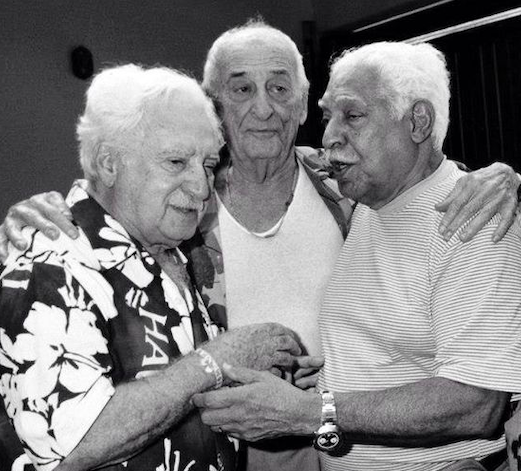
How did Carybé arrive in Salvador?
Carybé arrived in Salvador in 1949, after receiving a work grant to carry out an artistic survey of Bahia. He fell in love with the city and its people and decided to move there permanently in 1957. He became a naturalized Brazilian in 1958 and adopted Salvador as his home until the end of his life.
What are the characteristics of Carybé's works?
Carybé's works are characterized by the wealth of details, the expressiveness of the characters and the harmony of colors. He used different techniques and materials in his artistic production, such as painting, drawing, engraving, sculpture and ceramics. He was also a renowned muralist, having performed panels in various locations such as Miami International Airport and the Afro-Brazilian Museum in Salvador.
What is Carybé's style?
Carybé's artistic style is considered figurative and expressionist. He was inspired by artists such as Pablo Picasso, Paul Gauguin, Henri Matisse and Diego Rivera. He was also influenced by popular Brazilian art, especially ex-votos (objects offered to saints as a form of thanks or request) and carrancas (wooden sculptures that adorn the prows of boats on the São Francisco River). He sought to portray reality faithfully, but also with emotion and sensitivity.
What does Carybé's work portray?
Carybé's work mainly portrays Bahian culture, with its colors, rhythms, parties and religiosity. He fell in love with Bahia when he visited Salvador for the first time in 1944, at the invitation of writer Jorge Amado (1912-2001), with whom he became friends and illustrator of several books. Carybé became enchanted by Candomblé, to the point of becoming an Obá de Xangô, an honorary position in the Ilê Axé Opô Afonjá terreiro. He also portrayed other aspects of Brazilian popular culture, such as samba, carnival, capoeira and fishing.
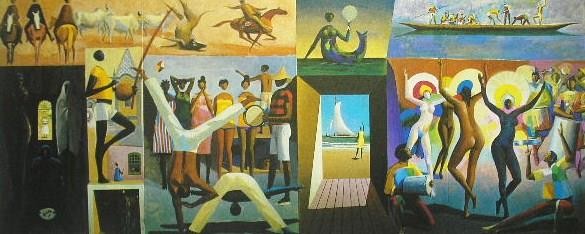
What are the themes portrayed in Carybé's works?
The themes portrayed in Carybé's works are varied, but always related to Afro-Brazilian culture and the everyday life of the people of Bahia. He represented the orixás of candomblé with their symbols and sacred animals; popular festivities such as Carnaval and the Lava do Bonfim; the urban and natural landscapes of Bahia; the activities of fishermen, capoeiristas and samba dancers; typical characters such as rascals, baianas and street vendors; and famous friends like Jorge Amado, Gabriel García Márquez (1928-2014) and Pierre Verger (1902-1996).
What are Carybé's most famous works?
1. The panels of the orixás:
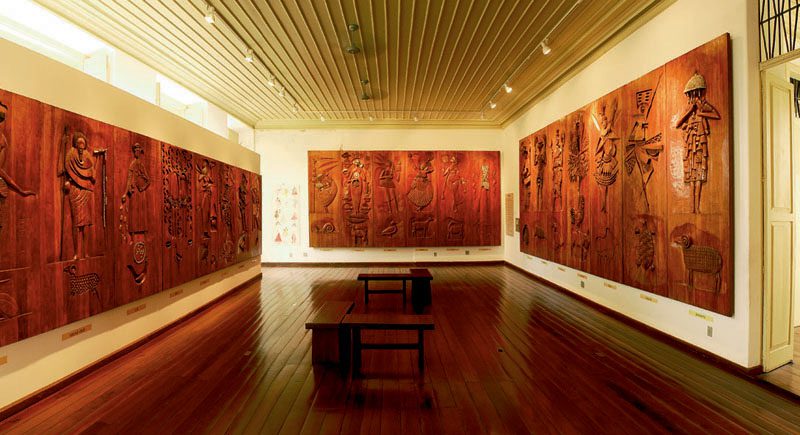
A series of 27 wooden panels representing the main candomblé deities, with their symbols and animals. The panels were commissioned by Banco da Bahia in 1968 and are on display at the Afro-Brazilian Museum in Salvador.
2. The Miami Airport Murals:
Carybé's mural at Miami International Airport is a public artwork depicting scenes from Afro-Brazilian culture. There are two panels measuring 5 by 16 meters each, painted in 1960 by the Argentine artist naturalized Brazilian Carybé, who lived in Bahia and was inspired by the Candomblé religion. The panels were commissioned by the airport when Carybé won a public art competition, but they sat forgotten for decades in a terminal that was to be demolished. In 2009, a Brazilian tourist and a baggage handler recognized the works and started a campaign to save them. With the support of the company Odebrecht, the panels were removed, restored and permanently installed at the Miami airport in 2014.
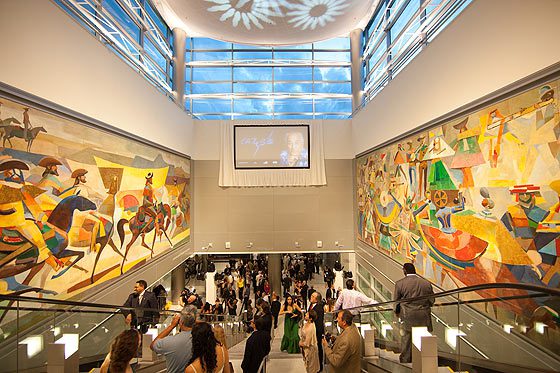
3. The illustrations of Jorge Amado's books:
Carybé illustrated more than 20 books by the Bahian writer Jorge Amado, such as Gabriela Cravo e Canela, Dona Flor and Her Two Husbands, Tent of Miracles and Tieta do Agreste. In 1943, for example, he illustrated the cover of the writer's book “Terras do Sem Fim”.

4. Woodcuts from Gabriel García Márquez's books:
Carybé illustrated several books by the Colombian writer Gabriel García Márquez, such as “One Hundred Years of Solitude”, “Nobody Writes to the Colonel” and “The Incredible and Sad Story of Cândida Erendira and Her Heartless Grandmother”. The illustrations below are from the book One Hundred Years of Solitude.
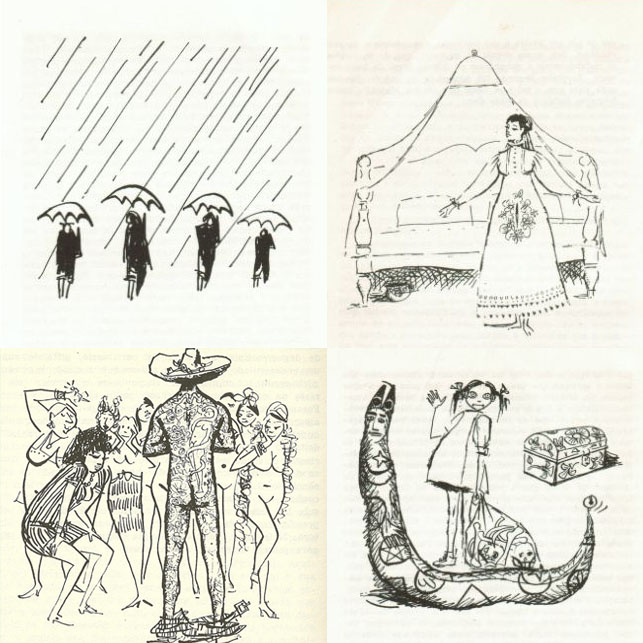
Did you like it? If interested, check out the book on the side and learn more about Carybé's paintings.

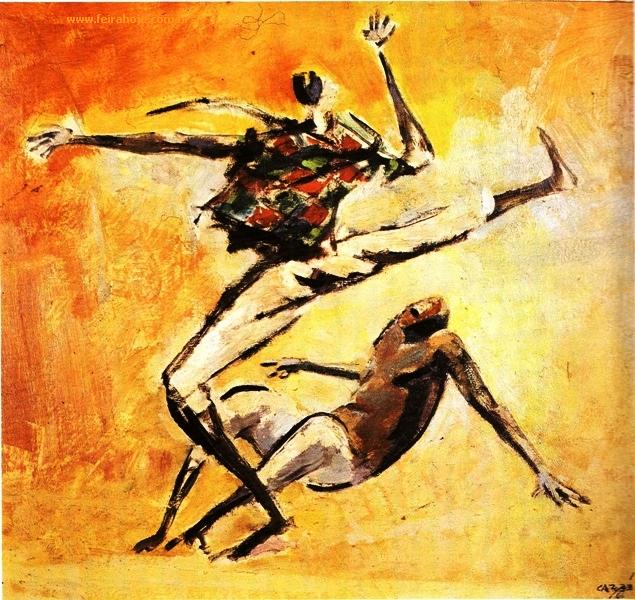
1 thought on “carybé: um mestre da cultura baiana”